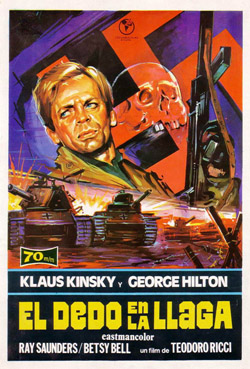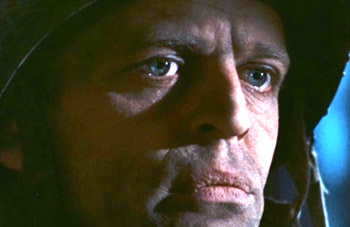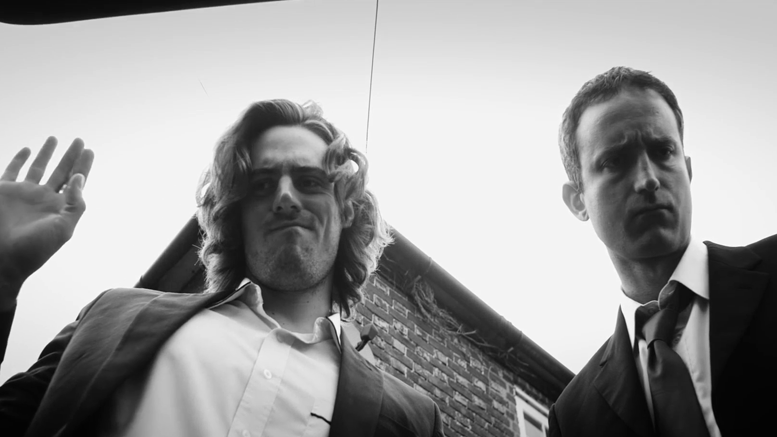aka Deux salopards en enfer (Fr), The Dirty Two (UK Video), Il dito nella piaga (It), Die Leoparden kommen (WG), The Liberators (US video)
1969
Italy
Enzo Boetani for Cine Azimut
Director: Tonino Ricci
Story: Tonino Ricci
Screenplay: Tonino Ricci, Piero Regnoli
Music: Riz Ortolani
Cinematography: Sandro Mancori {Cromoscope – Eastmancolor}
Editor: Antonietta Zita
Set design: Giorgio Bini
Cameraman: Mario Sbrenna, Emilio Varriano
Filmed:
Release information: Registered 05.08.69. Italy (10.08.69, 93 mins), France (11.03.70, 91 mins), West Germany (10.06.82, 83 mins)
Cast: Klaus Kinski (Norman Carr), George Hilton (Lieutenant Micheal Sheppard), Ray Saunders (Calvin MacCarey), Betsy Bell (Daniela), Enrico Pagano (little Michele), Franco Cobianchi, Marta Salvadori (the girl), Piero Mazzinghi, Bruno Adinolfi

Two murderers are court-martialed and sentenced to die in front of the firing squad. One (Klaus Kinski) is a looter who had shot a protesting shopkeeper, the other (Rai Saunders) a coloured private who angrily killed a racist colleague. The young officer (George Hilton) assigned to supervise the execution manages to read the map wrongly and instead causes the death of his own men. Fleeing from German snipers, these three characters form a very uneasy alliance. Hilton wants to take the condemned men back, but they are the ones who know how to survive behind enemy lines – so he has to rely upon them or die.
Eventually they stumble across an occupied village and are promptly hailed as liberators. The people welcome them into their arms and make them at home in every way. Soon their antisocial ways moderate as they are exposed to that which they have never experienced: Kinski finds love, Saunders acceptance and Hilton responsibility. Such a state cannot last forever, and before long the Germans attack, leaving only the three newcomers to fight against their advance.
Sound exciting? Think again buster, this is a Tonino Ricci film. Yes, the director of Rush the Assassin (83), Panic (81) and Shark’s Cave (78) strikes again. It must now be time to undertake a re-evaluation of his lengthy career. Dismissed as a hack for far too long, it is at last time to truly confirm his status. It must be proclaimed with a Shakespearean roll of the tongue that no; he is not a mere shoddy filmmaker bereft of any artistic imagination. Tonino Ricci is a true auteur, a veritable high priest of complete and utter crap.
Like a true visionary his simple presence pervades everything that he touches, albeit transforming the receptacle into odorous excrement like an alchemically reversed King Midas. Similarly, like Bunuel, Argento or Welles, his films are instantly recognisable – they’re all appalling. Coming across a good film by this guy would be almost as disconcerting as discovering a country and western musical made by David Cronenberg. Even his better works, Cross Current (71), for instance, can only be described as insipid. True genius of a different order indeed. So what is it that’s so bad about Dirty Two, then. Well, firstly it’s porridge like consistency. The cinematic equivalent of a Czech dumpling, it is something that intrudes on your brain and settles like a dead-weight, threatening never to be truly digested. Everything is inordinately slow and drawn out, not the best approach for an action film. Indeed, it even makes the viewer feel as though they are moving is some higher gravitational field.

Furthermore, there is a distinct over-willingness to step into the unsavory grips of whimsicality. The middle section (which centres upon the gradual rehabilitation of the main characters) is particularly painful. Mutant children, who probably symbolize freedom or suchlike, are allowed to run around freely without medication. The sight of these diminutive cretins is enough to make even the most sentimental of people reach for the razor-blades. Most of all, perhaps, is the fact that it’s such an overwhelming waste of potential. Ricci manages to coax bland contributions from both photographer Sandro Mancori (who lensed both Sartana (68) and Sabata (70) with considerable skill) and the otherwise excellent Riz Ortolani.
How a film that headlines both Klaus Kinski and George Hilton can be bad is an enigma, but this manages. That said, the former is rather miscast (good at the evil bits, but when he’s called upon to do heroic he comes across as a psycho) and the latter isn’t really allowed to let any of his trademark charm shine through. Rai Saunders, in the main supporting role, is surprisingly good. Anyone who can say the line “God put too much colour in some men’s skin and not enough heart into others” whilst maintaining their dignity deserves some credit.
Avoid.
